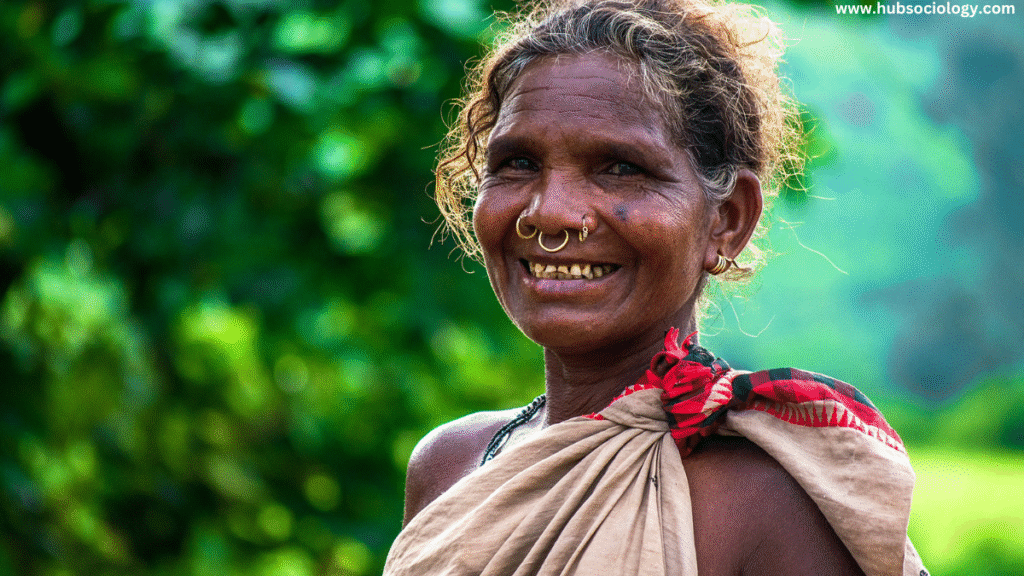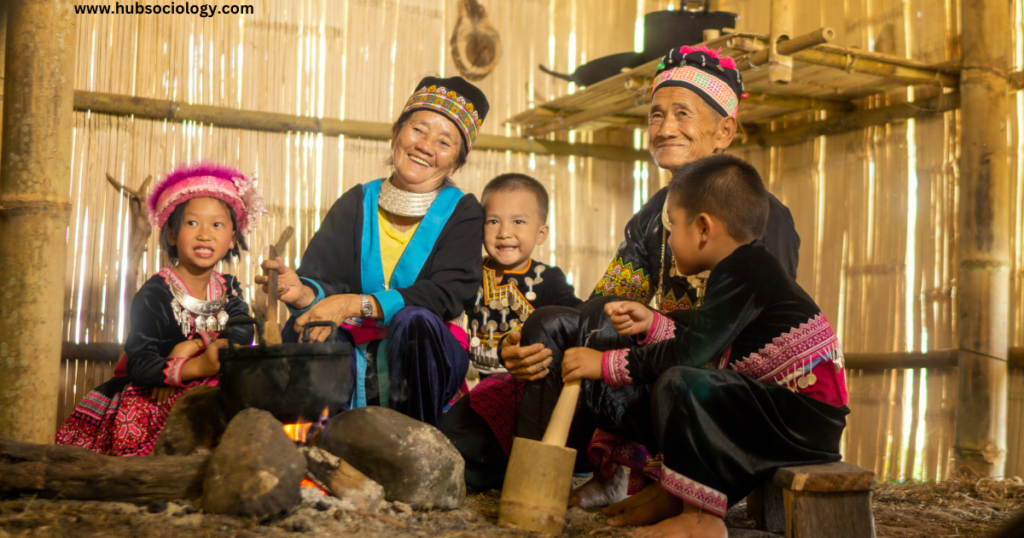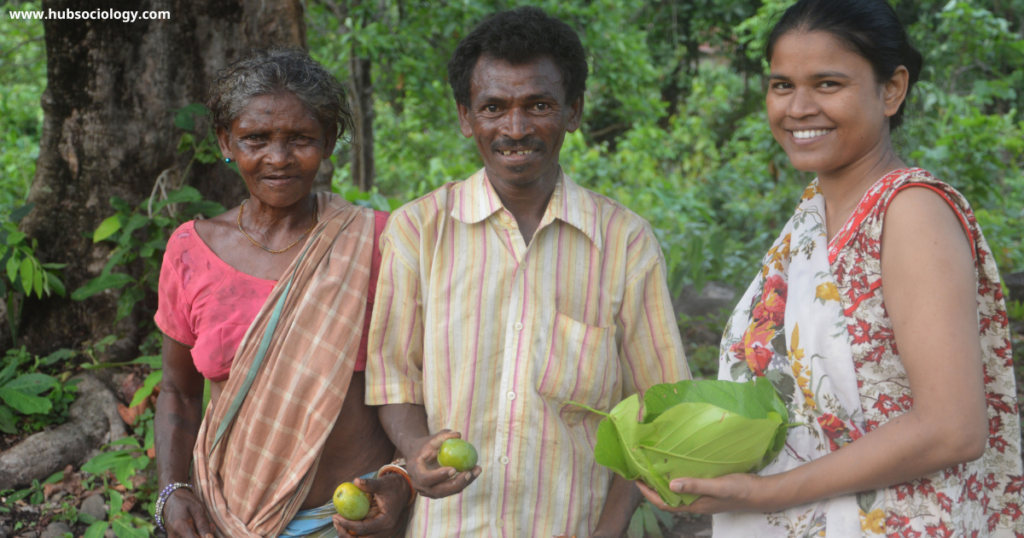Introduction on Racial Diversities in India
India is a land of immense diversity, encompassing a wide range of cultures, languages, religions, and ethnicities. Among these diversities, racial differences form a significant yet often understudied aspect of Indian society. While India is predominantly known for its caste and religious variations, racial diversity also plays a crucial role in shaping social identities, hierarchies, and interactions.
From the fair-skinned populations of North India to the darker-complexioned communities of South India and the distinct Mongoloid features of the Northeastern tribes, India exhibits a rich racial mosaic. This diversity is a product of historical migrations, invasions, and settlements over thousands of years. However, racial differences in India are often conflated with caste, regional, and ethnic identities, making their sociological study complex.

This article explores Racial Diversities in India from a sociological perspective, examining its historical roots, social implications, and contemporary manifestations in terms of identity, discrimination, and integration.
Table of Contents
Historical Background of Racial Diversities in India
India’s racial diversity can be traced back to ancient migrations and invasions. The major racial groups in India include:
- Negrito – Among the earliest inhabitants, now found in isolated tribes such as the Andamanese.
- Proto-Australoid – Represented by tribal groups like the Santhals, Gonds, and Bhils.
- Mongoloid – Predominant in the Northeastern states (e.g., Nagas, Mizos, Manipuris) and parts of the Himalayas.
- Mediterranean (Dravidian) – Associated with South Indian populations.
- Indo-Aryan – Linked to North Indian populations due to historical migrations from Central Asia.
The Aryan Migration Theory suggests that Indo-Aryans migrated into India around 1500 BCE, mixing with the existing Dravidian populations. Later, invasions by Persians, Greeks, Huns, Arabs, and Mughals further diversified India’s racial composition. The British colonial period introduced European racial theories, which later influenced social hierarchies based on skin color and facial features.
Racial Identity and Social Stratification
Unlike Western societies, where race is a primary marker of social division, India’s social stratification is more prominently based on caste, religion, and language. However, racial features such as skin color, nose shape, and hair texture subtly influence social perceptions.
1. Skin Color and Beauty Standards
- Fair skin has historically been associated with higher status, partly due to colonial and Brahminical influences.
- The “fair skin preference” is evident in matrimonial ads, Bollywood casting, and the booming skin-whitening industry.
- Darker-skinned individuals, particularly from South India and lower castes, often face implicit biases in employment and marriage markets.
2. Racial Stereotyping in Regional Identities
- Northeastern Indians, with Mongoloid features, frequently face racial discrimination, being labeled as “Chinki” or mistaken as foreigners.
- South Indians, often darker-skinned, are stereotyped in North India through jokes about language and appearance.
- Tribal communities (Adivasis), with Proto-Australoid features, face marginalization and are often excluded from mainstream social and economic opportunities.
3. Caste and Racial Overlaps
- Some scholars argue that the caste system has racial undertones, with upper castes generally having lighter skin and Indo-Aryan features, while lower castes and Dalits often exhibit Dravidian or Proto-Australoid traits.
- However, this is not absolute, as caste is primarily a social construct rather than a purely racial one.
Racial Discrimination and Exclusion
While India does not have institutionalized racism like the West, racial prejudices manifest in everyday interactions.

1. Discrimination Against Northeastern Communities
- Northeastern Indians frequently report racial slurs, physical attacks, and exclusion in metropolitan cities.
- Cultural differences (diet, clothing, lifestyle) make them targets of ridicule and discrimination.
- The 2014 murder of Nido Tania, a young Arunachali student in Delhi, highlighted the severity of racial violence.
2. Colorism in Media and Employment
- Bollywood predominantly casts fair-skinned actors, while darker-skinned actors are relegated to comic or villainous roles.
- Corporate and hospitality sectors show a preference for fair-skinned employees, reinforcing workplace discrimination.
3. Tribal Marginalization
- Adivasi communities, often racially distinct, face displacement, land alienation, and lack of access to education and healthcare.
- They are frequently exoticized or stigmatized in mainstream narratives.
Integration and Changing Perspectives on Racial Diversities in India
Despite deep-rooted biases, India is gradually witnessing changes in racial perceptions.
1. Legal and Policy Measures
- The Protection of Civil Rights Act and Scheduled Castes and Tribes (Prevention of Atrocities) Act offer some safeguards against racial and caste-based discrimination.
- The Beauty Standards Bill (proposed) seeks to ban unfair advertisements promoting fair skin.
2. Social Movements and Awareness
- Campaigns like “Dark is Beautiful” challenge colorist stereotypes.
- Northeastern groups have organized protests and advocacy groups (e.g., North East Support Centre) to combat racism.
3. Globalization and Changing Norms
- Exposure to global anti-racist movements (e.g., Black Lives Matter) has influenced Indian discourse on race.
- Younger generations are increasingly rejecting colorist practices in matrimonial and employment sectors.
Conclusion on Racial Diversities in India
India’s racial diversity is a testament to its long history of migrations and cultural amalgamation. However, this diversity has also led to implicit and explicit biases that affect social inclusion, economic opportunities, and personal dignity. Unlike Western societies, where race is a dominant social divider, India’s racial dynamics are intertwined with caste, region, and ethnicity, making the issue more complex.
While legal and social efforts are being made to combat racial discrimination, deeply ingrained prejudices require sustained education, media reform, and policy interventions. Recognizing and celebrating India’s racial diversity—rather than using it as a basis for exclusion—will be crucial in building a more inclusive society.

In a rapidly globalizing world, India must confront its racial hierarchies to ensure that no individual is marginalized based on their physical appearance. Only then can the nation truly embrace its motto of “Unity in Diversity.”
Do you like this this Article ? You Can follow as on :-
Facebook – https://www.facebook.com/hubsociology
Whatsapp Channel – https://whatsapp.com/channel/0029Vb6D8vGKWEKpJpu5QP0O
Gmail – hubsociology@gmail.com
Topic Related Questions on Racial Diversities in India
5-Mark Questions on Racial Diversities in India (Short Answer Type)
- Define racial diversity in the Indian context.
- Name the major racial groups found in India.
- How does skin color influence social perceptions in India?
- What is the Aryan Migration Theory, and how does it relate to India’s racial diversity?
- Briefly explain the term “colorism” with reference to India.
- How are Northeastern communities racially stereotyped in India?
- What role does Bollywood play in perpetuating racial stereotypes?
- How is caste sometimes linked to racial features in India?
- Give two examples of racial discrimination faced by tribal communities in India.
- What is the “Dark is Beautiful” campaign, and what is its significance?
10-Mark Questions on Racial Diversities in India (Descriptive Answer Type)
- Discuss the historical roots of racial diversity in India.
- Explain how racial diversity in India differs from Western concepts of race.
- Analyze the impact of colonialism on racial perceptions in India.
- How does skin color bias affect marriage and employment in India?
- Discuss the racial stereotypes faced by South Indians in North India.
- Examine the racial discrimination faced by Northeastern communities in metropolitan cities.
- How does media (films, advertisements) reinforce racial biases in India?
- What are the similarities and differences between caste and race in India?
- Discuss the social and economic challenges faced by Adivasi communities due to racial differences.
- Evaluate the effectiveness of legal measures against racial discrimination in India.
15-Mark Questions on Racial Diversities in India (Long Answer/Essay Type)
- “India is a melting pot of racial diversity.” Discuss this statement with reference to major racial groups and their social integration.
- Analyze the sociological implications of skin color bias in India, citing examples from media, marriage, and employment.
- How does racial diversity in India intersect with caste and regional identities? Explain with suitable examples.
- Critically examine the racial discrimination faced by Northeastern communities in India. What steps have been taken to address it?
- “Racial diversity in India is often overshadowed by caste and religion.” Discuss this statement in detail.
- Compare and contrast racial diversity in India with that of the United States. How do historical and social factors shape these differences?
- Discuss the role of globalization in changing racial perceptions in India. Are traditional biases diminishing?
- How do beauty standards in India reflect racial hierarchies? Explain with reference to advertisements, films, and social attitudes.
- “The Indian caste system has racial undertones.” Critically analyze this statement.
- What measures should be taken to promote racial harmony and eliminate discrimination in India? Suggest policy and social reforms.
